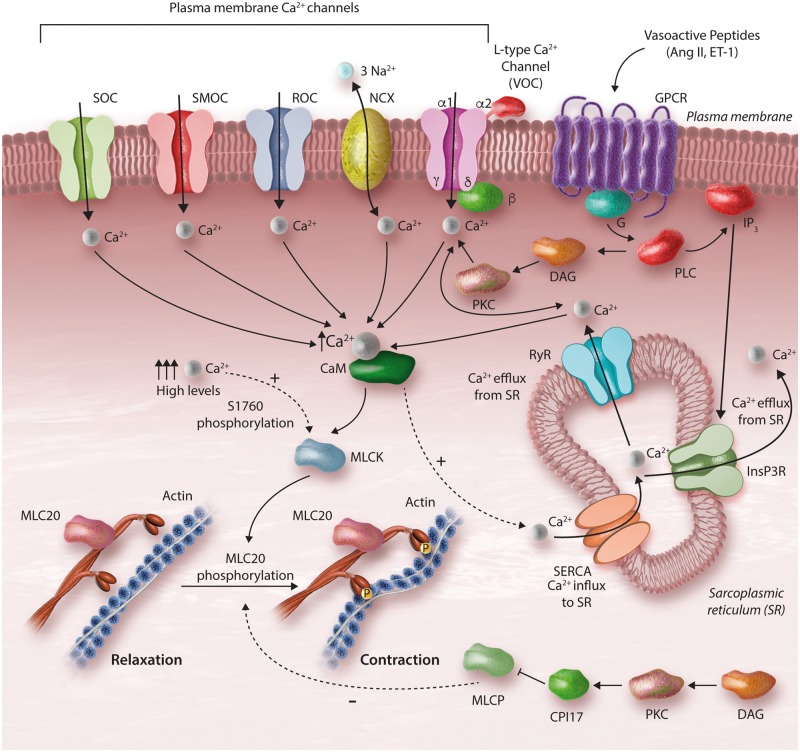Figure 1.
Calcium-dependent regulation of vascular smooth muscle cell (VSMC) contraction. Vasoconstrictors induce VSMC contraction by increasing the intracellular levels of Ca2+. Vasoactive peptides, such as Ang II, bind to G protein-coupled receptors (GPCRs) activating PLC leading to (i) production of IP3 and (ii) formation of DAG. IP3 binds to the IP receptor Ca2+ channel (InsP3R) and induces Ca2+ release from the sarcoplasmic reticulum (SR). DAG causes activation of PKC, which influences Ca2+ channels, such as store-operated Ca2+ channel (SOC), second messenger-operated Ca2+ channel (SMOC), receptor-operated Ca2+ channel (ROC), voltage-gated Ca2+ channel (VOC), and the Na+–Ca2+ exchanger (NCX). PKC also stimulates activity of the ryanodine Ca2+ channel (RyR) inducing release of Ca2+ from the SR. MLCP activity is reduced by CPI-17 phosphorylation. Ca2+ binds to calmodulin and activates the MLCK, leading to MLC20 phosphorylation at Ser19, actin polymerization, and vascular contraction.

